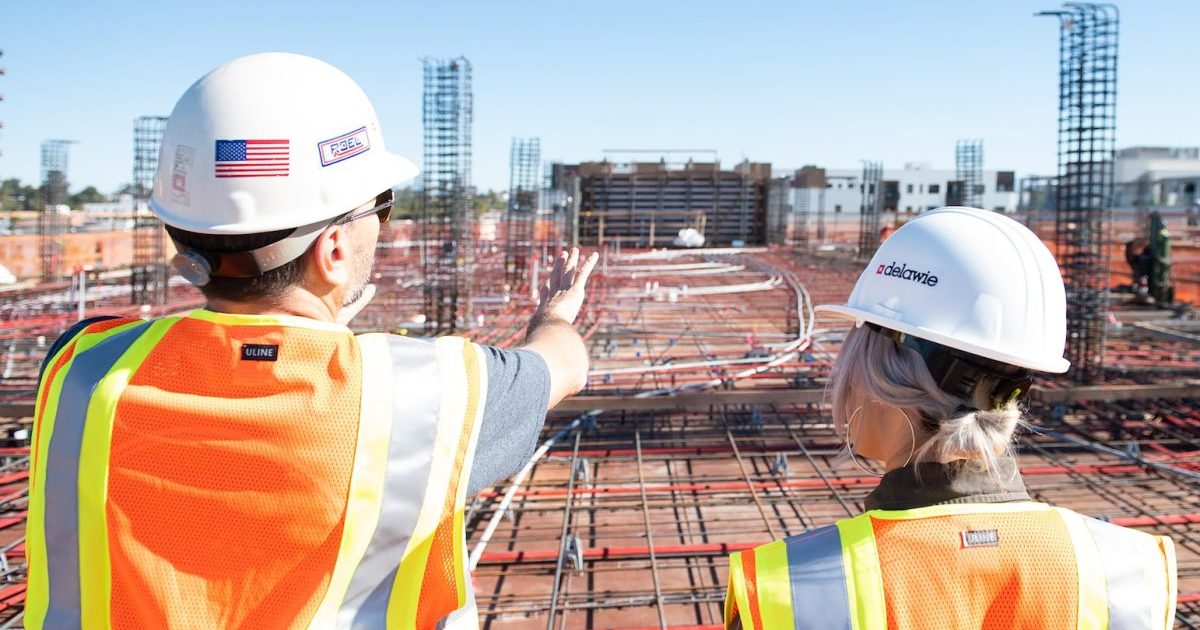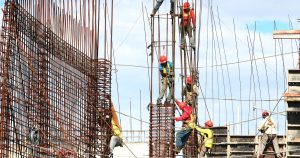Introduction
Are you curious about the different procurement methods used in the construction industry? If so, this article will provide you with valuable insights. When it comes to executing construction projects, choosing the right procurement method is crucial. It involves considering various factors such as your requirements, budget, quality expectations, project constraints, and risk tolerance.
The project management team, comprising professionals like architects and engineers, plays a vital role in understanding your needs and selecting the most suitable procurement method. In this article, we will explore the key factors to consider when choosing a procurement method and delve into both traditional and alternative methods commonly employed in the construction industry.
Procurement methods may seem complex at first glance, but understanding them can significantly impact the success of your construction project. Traditional methods have long been used in the industry and offer a structured approach with well-defined roles for each party involved. On the other hand, alternative methods provide flexibility and innovation by deviating from conventional processes.
By exploring both categories of procurement methods in construction, you’ll gain a comprehensive understanding of how to navigate through these options effectively. So let’s dive into this fascinating topic and discover how to choose the most appropriate procurement method that aligns with your unique needs and goals in construction projects.
What is procurement means?
In everyday language, procurement refers to the process of acquiring or obtaining any kind of service or commodity. In the construction industry, this acquisition and obtaining strategy can be time-consuming and costly. Therefore, various contract processes are used as procurement methods in the construction industry. Essentially, these different types of contracts are introduced as methods for procuring and executing construction projects.
To summarize, Procurement methods in the construction industry refer to the types of contract systems used for project execution.
We’ll also delve into the importance of understanding and meeting the client’s requirements when deciding on a procurement method for a construction project.
Main Procurement Methods
With the stroke of a pen and the exchange of agreements, procurement breathes life into construction projects, transforming visions into tangible realities. The procurement process in the construction industry involves much more than simply acquiring or obtaining services and commodities. It encompasses understanding and meeting the client’s expectations, conducting thorough risk assessments, exploring various financing options, and considering alternative procurement methods. To ensure that a construction project is successful, it is crucial to carefully evaluate these factors before finalizing a procurement method or contract type.
To dive deeper into the complexity of procurement in construction, let’s take a look at a table that highlights some key aspects:
| Procurement Methods | Steps |
|---|---|
| Traditional Procurement methods | Focus on the Client’s Requirements |
| Alternative Procurement Methods | Consider the main key factors |
By analyzing these different elements, the project management team can determine the most suitable procurement method for the specific project. This decision-making process sets the foundation for successfully executing the construction project while meeting all client requirements. Transitioning into the subsequent section about choosing a proper procurement method or contract type, let’s explore how this crucial decision is made without compromising any essential steps.
Process of Choosing a Proper Procurement Method or Contract Type
When deciding on the right approach to acquiring services and commodities for a construction project, it’s essential to carefully consider the client’s requirements and expectations.
The project management team, comprising professionals such as architects, quantity surveyors, and engineers, plays a crucial role in understanding these needs thoroughly before planning the project.
Factors such as speed or time, budget, expected quality, specific project constraints, risk, asset ownership, and financing all come into play when choosing a procurement method.
For example, if the client is in urgent need of completing the project due to time constraints or rental agreements already in place, a fast-track procurement method would be suitable.
On the other hand, if budget is the primary concern for the client and they want to avoid exceeding it at all costs, a procurement method that ensures cost control should be selected.
Additionally, some clients prioritize achieving maximum quality in their projects. In such cases where high-end finishes are desired and no compromises are allowed on quality standards set by the client themselves.
The selection of an appropriate procurement method is of utmost importance as it can greatly impact the success of a construction project.
By considering factors like time constraints, budget limitations, quality expectations, specific project constraints, risk mitigation strategies, asset ownership considerations, and financing requirements; one can ensure that the chosen procurement method aligns with both the client’s needs and industry best practices.
This careful consideration sets up subsequent sections about ‘client’s requirements of the project’ without explicitly stating ‘step’.
Client’s Requirements For The Project
Understand your client’s vision and desires for the project, ensuring their requirements are met to create a space that exceeds their expectations. This is the first and most crucial step in choosing a procurement method or contract type for your construction project.
By thoroughly understanding the client’s expectations, needs, project requirements, specifications, and preferences, you can tailor the procurement method to align perfectly with their goals.
To evoke emotion in the audience and truly connect with your client’s desires, consider these factors when determining the best procurement method:
- Creating a space that reflects their unique style and personality
- Incorporating innovative design elements that inspire awe and admiration
- Ensuring functionality and practicality in every aspect of the project
- Utilizing sustainable materials and practices to contribute positively to the environment
- Delivering exceptional craftsmanship that surpasses industry standards
By considering these factors, you can guarantee that your chosen procurement method not only meets but exceeds your client’s expectations.
Now let’s delve into the key factors to choose a suitable procurement method, which will further guide you in making an informed decision about how to proceed with your construction project.
Key Factors To Choose a Suitable Procurement Method
When choosing a procurement method for your construction project, there are several key factors to consider.
Firstly, you need to think about the time or speed at which you want the project to be completed.
Secondly, budget or cost is crucial as you want to ensure that the project stays within your financial constraints.
Lastly, the expected quality of the end result should also be taken into account.
Taking these factors into consideration will help you make an informed decision on which procurement method is best suited for your project.
1. Time / Speed
If you want to get things done quickly in the construction industry, you’ll need to choose a procurement method that prioritizes speed and efficiency. Time management is crucial in construction projects, and selecting a procurement method that focuses on project scheduling can help ensure that deadlines are met.
One option is to opt for fast-track construction, which involves overlapping design and construction phases to expedite the overall timeline. By doing so, you can reduce the time it takes to complete the project without compromising on quality.
Another consideration is the construction timeline itself. Some procurement methods allow for greater flexibility in terms of project duration, while others may have stricter timelines. Evaluating these factors will help you determine the best approach for achieving your desired speed of completion.
When considering time as a factor in choosing a procurement method or contract type, it’s important to recognize how it intersects with other aspects of the project, such as cost or budget. While speed may be a priority, it’s essential to balance this with financial constraints and ensure that the chosen procurement method aligns with your budgetary limitations.
Transitioning into the next section about ‘cost/budget’, it becomes clear that finding a procurement method that addresses both time and financial considerations is crucial for successful project execution.
2. Cost / Budget
Managing costs and staying within budget is a critical factors in determining the most effective approach to completing a construction project. Cost estimation, budget management, cost control, cost analysis, and avoiding cost overruns are all key considerations when choosing a procurement method or contract type. It is essential to carefully assess the financial resources available for the project and ensure that the chosen approach aligns with the client’s budgetary constraints. By accurately estimating costs at the planning stage and continuously monitoring expenses throughout the project’s lifecycle, potential financial risks can be mitigated, and necessary adjustments can be made to stay within budget.
To effectively manage costs in construction projects, it is crucial to have a clear understanding of all financial aspects involved. This includes not only direct construction costs but also indirect expenses such as permits, taxes, insurance, and professional fees. A comprehensive cost analysis should be conducted to identify potential areas of overspending or opportunities for cost savings. Implementing proper budget management practices allows for better decision-making regarding resource allocation and prioritization of project tasks.
Once the costs have been effectively managed and controlled through accurate estimation and continuous monitoring, it is equally important to address another significant factor in construction projects – quality.
3. Quality
Maintaining high standards of excellence is crucial to ensuring the success and satisfaction of stakeholders throughout a construction project. When it comes to procurement methods in construction, the choice of method can have a significant impact on the quality of the final outcome.
Here are some key points to consider when comparing procurement methods for quality assurance:
- Quality should be a priority: Regardless of the chosen procurement method, emphasizing and prioritizing quality from the very beginning is essential. This means clearly defining expectations, setting quality benchmarks, and establishing processes for monitoring and evaluating quality throughout the project.
- Collaborative approach: Some procurement methods, such as design-build or integrated project delivery, promote collaboration between different parties involved in the construction process. This collaborative approach allows for better coordination and communication among stakeholders, leading to improved quality outcomes.
- Quality control measures: Different procurement methods may require specific quality control measures. For example, in traditional methods like design-bid-build, there is usually a separate contract for each phase of construction, allowing for more thorough inspections and testing at each stage. On the other hand, alternative methods like construction management may involve continuous monitoring and proactive problem-solving to ensure high-quality standards are met.
- Case studies on successful implementation: Studying successful projects that have implemented quality-focused procurement methods can provide valuable insights into best practices and lessons learned. Analyzing these case studies can help identify strategies that contribute to achieving exceptional quality outcomes in construction projects.
By considering these factors and implementing best practices for ensuring quality in construction procurement, you can set a solid foundation for delivering a high-quality project that meets or exceeds client expectations while satisfying specific project constraints.
Moving forward into the next section about ‘specific project constraints,’ it’s important to recognize how these constraints interact with procurement methods to further influence project outcomes without compromising on quality standards.
4. Specific Project Constraints
Now that you understand the importance of quality in procurement methods, let’s move on to another crucial factor: specific project constraints. These constraints can significantly impact the choice of procurement method in the construction industry.
For example, when government entities are involved as clients, transparency becomes a key consideration. Government projects often have strict regulations and requirements that must be followed, and the procurement method chosen should ensure transparency throughout the process.
In addition to traditional procurement methods, there are also alternative methods available that can cater to specific project constraints. These alternative methods include emerging cost contracts, which offer flexibility in terms of budget and time constraints. By considering these specific project constraints, the project management team can select a procurement method that aligns with the unique needs and requirements of the project.
Choosing the right procurement method for a construction project involves careful consideration of various factors such as speed or time, budget, expected quality, risk, asset ownership, and financing. Additionally, specific project constraints play a significant role in determining whether traditional or alternative procurement methods are more suitable.
With this understanding of specific project constraints in mind, we can now transition into discussing how risks affect procurement methods in construction.
5. Risk
What factors should be considered when evaluating the impact of risk on choosing a suitable procurement method or contract type for a construction project? Risk assessment is a crucial step in determining the appropriate procurement method or contract type for a construction project. It involves identifying and analyzing potential risks that may arise during the project’s execution, such as design changes, delays, cost overruns, and safety issues. By assessing these risks, the project management team can make informed decisions about which procurement method or contract type would best mitigate those risks.
Once the risks have been identified, risk mitigation strategies can be implemented to minimize their impact. These strategies may include contingency plans, insurance coverage, performance bonds, and clear contractual terms that allocate responsibility for specific risks to different parties involved in the construction project. Effective risk management is essential in ensuring that potential problems are addressed proactively and that any negative consequences are minimized.
Case studies on project risks can provide valuable insights into how different procurement methods or contract types have performed under similar circumstances. By examining real-life examples from past projects, construction professionals can learn from both successful and unsuccessful experiences and apply best practices for managing project risks in their own projects.
| Key Factors | Considerations |
|---|---|
| Risk Assessment | Identify potential risks during project execution |
| Risk Mitigation Strategies | Implement plans to minimize the impact of identified risks |
| Importance of Risk Management | A proactive approach to address potential problems |
| Case Studies on Project Risks | Learn from past experiences with similar projects |
| Best Practices for Managing Project Risks | Apply proven methods to effectively manage risks |
Moving forward into the next section about ‘asset ownership’, it is important to understand how this factor can also influence the choice of procurement method or contract type for a construction project.
6. Asset Ownership
Asset ownership plays a crucial role in determining the most suitable contract type for a construction project. The ownership of the property can have significant implications on the procurement method chosen.
For example, if a client doesn’t have ownership of the property but still wants to develop it, alternative procurement methods may need to be considered. In such cases, strategies for asset ownership need to be explored, such as leasing or joint ventures with the property owner.
There are also legal considerations that come into play when it comes to asset ownership. Contracts and agreements need to be carefully reviewed and negotiated to ensure that all parties involved understand their rights and responsibilities regarding the asset. This includes issues related to maintenance, insurance, and potential disputes over ownership.
Moving on from asset ownership considerations, another important factor in choosing a procurement method is financing…
7. Financing
Furthermore, the financial aspect of a construction project plays a vital role in determining the most appropriate contract type to be chosen. When considering financing options for a construction project, there are several factors that need to be taken into account.
Here are three key aspects related to project funding and procurement strategies:
- Cost control: One of the primary concerns when it comes to financing a construction project is cost control. Clients want to ensure that their budget is well-managed and that there won’t be any unexpected expenses or budget overruns. Therefore, the chosen procurement method should provide transparency and accountability in terms of costs, allowing clients to have better control over their finances throughout the project.
- Project financing: Another important consideration is how the project will be financed. Depending on the size and complexity of the project, different financing options may be available. For example, some projects may be funded by banks or other financial institutions, while others may rely on private investors or government funding. The chosen procurement method should align with the specific requirements and constraints of the project’s financial structure.
- Procurement strategies: The selected procurement method should also take into account various procurement strategies that can help optimize costs and maximize value for money. These strategies include competitive bidding processes, negotiation with suppliers and contractors, as well as long-term partnerships with trusted vendors. By carefully considering these options, clients can ensure that they get the necessary resources at reasonable prices while maintaining high-quality standards.
With these factors in mind, it becomes clear that choosing an appropriate procurement method involves a careful analysis of both financial considerations and strategic objectives. By addressing these aspects effectively, clients can set a solid foundation for the successful execution of their construction projects.
Moving forward to discuss traditional procurement methods in construction…
Traditional Procurement Methods in Construction
In this discussion, we’ll explore the traditional procurement methods in the construction industry. These include re-measurable/remuneration contracts, lump-sum contracts, admeasurement contracts, and cost reimbursement contracts. These methods are commonly used to determine the pricing and payment terms for construction projects. By understanding these different approaches, you can make informed decisions when choosing the most suitable procurement method for your specific project requirements.
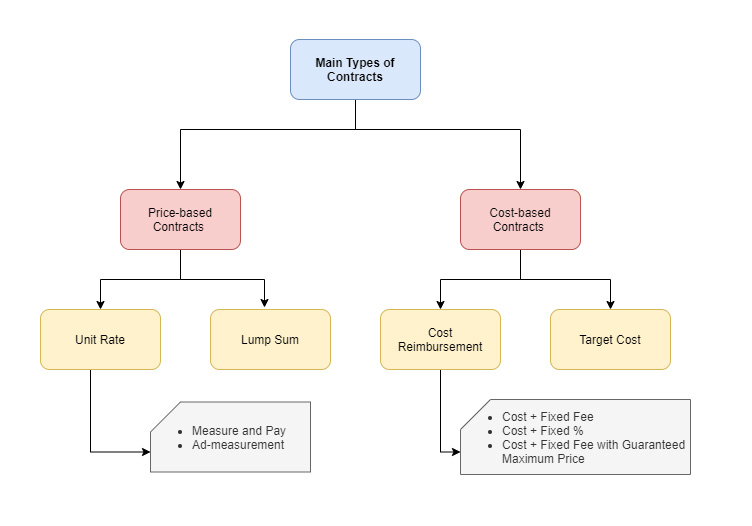
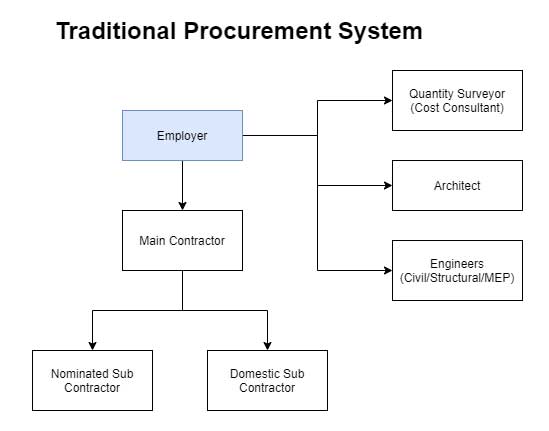
1. Re-measurable / Remeasurement Contract
Consider a re-measurable contract, where you can accurately measure and manage the costs of your construction project. In this type of procurement method, the client pays for the actual quantities of work done based on measurements taken during the construction process. This allows for flexibility in adjusting the scope of work and provides transparency in cost management.
To better understand the benefits of a re-measurable contract, let’s compare it to Lump-sum Contract:
| Lump-sum Contract | Re-Measurable Contract |
|---|---|
| Fixed price based on initial estimates | Payment based on actual quantities measured |
| Limited flexibility in scope changes | Allows for adjustments in scope as needed |
| Potential for disputes over pricing and variations | Transparent cost management and accurate measurement |
| Risk of cost overruns due to unforeseen circumstances | Ability to control costs throughout the project |
By opting for a re-measurable contract, you can have more control over your project’s budget and ensure that you only pay for the work actually completed. However, it is important to consider other factors influencing procurement decisions such as time constraints, expected quality, specific project constraints, risk tolerance, asset ownership, and financing options.
Now let’s transition into discussing another type of procurement method: lump-sum contracts.
2. Lump-sum Contract
Now let’s discuss the current subtopic, which is the ‘Lump-sum contract‘.
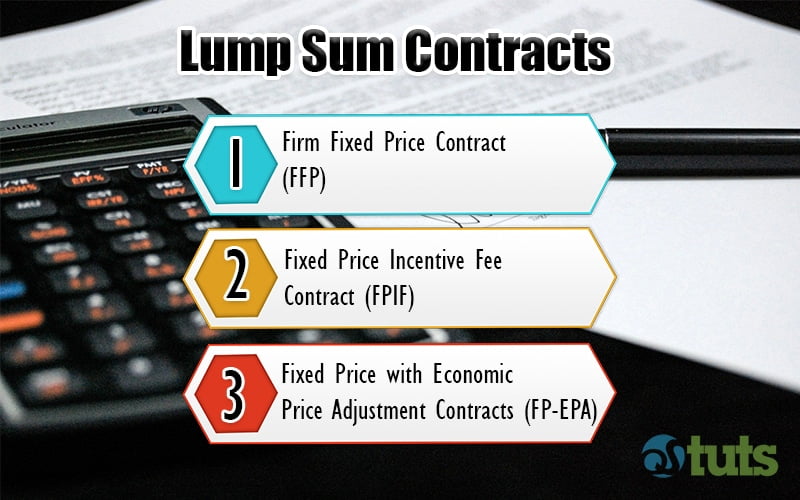
In construction procurement methods, a lump-sum contract is a type of agreement where the contractor agrees to complete the project for a fixed price. This means that the client and contractor agree on a specific sum of money that will be paid for the entire scope of work, regardless of any changes or variations that may occur during the project.
There are several advantages to using a lump-sum contract in construction projects. Firstly, it provides cost certainty for the client as they know exactly how much they’ll need to budget for the project. Secondly, it shifts most of the risk associated with cost overruns or delays onto the contractor, as they’re responsible for completing the work within the agreed-upon price and timeframe. Additionally, this type of contract encourages contractors to carefully plan and manage their resources efficiently in order to maximize profit.
However, there are also some disadvantages to consider when using a lump-sum contract. One major drawback is that any changes or variations in the scope of work can lead to additional costs and delays. These changes may arise due to unforeseen circumstances on-site or client-requested modifications. Furthermore, since all risks are transferred onto the contractor in this type of contract, they may include contingency amounts in their initial pricing which can drive up costs.
To summarize, a lump-sum contract is one type of procurement method used in construction projects where a fixed price is agreed upon between client and contractor. While it provides cost certainty and places most risks on contractors, it can also lead to additional costs for changes or variations in scope.
This highlights one key difference between traditional procurement methods like lump-sum contracts and alternative methods such as design-build contracts or public-private partnerships (PPPs). Design-build contracts offer benefits such as streamlined communication between different parties involved and faster completion times due to overlapping design and construction phases. On the other hand, PPPs face challenges like complex legal frameworks and potential conflicts of interest between public and private entities.
With that in mind, let’s move on to the next section about ‘admeasurement contracts’.
3. Admeasurement contract
Explore the benefits and considerations of using an admeasurement contract when managing your construction project. An admeasurement contract is a type of procurement method where the contractor’s payment is based on the actual quantities of work done, rather than a fixed price.
This means that the contractor will be paid for the exact amount of work completed, which can provide more transparency and flexibility in terms of cost control. With an admeasurement contract, you have the advantage of being able to accurately track and monitor costs throughout the project, as payments are directly linked to the quantities of work carried out. This can help prevent any surprises or unexpected expenses that may arise with other types of contracts.
However, it is important to consider certain factors before opting for an admeasurement contract. Firstly, you need to ensure that there is a clear understanding between all parties involved regarding how measurements will be taken and verified. This requires accurate record-keeping and regular inspections to ensure that all work completed aligns with agreed-upon measurements.
Additionally, since payments are based on quantities rather than a fixed price, there may be some variability in costs depending on how much work is actually done. Therefore, it’s crucial to have effective cost management systems in place to avoid any potential overpayment or disputes.
Moving on to the subsequent section about ‘cost reimbursement contracts’…
4. Cost Reimbursement Contract
Imagine having the flexibility to reimburse your contractor for the actual costs incurred during your construction project, allowing you to closely manage expenses and ensure transparency throughout the process. Cost reimbursement contracts provide exactly that. With this type of procurement method, you can reimburse the contractor for their direct costs, such as labor, materials, equipment, and subcontractor fees, along with allowable indirect costs like overhead and profit. It provides a detailed breakdown of all expenses incurred, giving you full visibility into how your budget is being utilized.
To better understand the advantages and disadvantages of cost reimbursement contracts, let’s take a look at the following table:
| Advantages | Disadvantages |
|---|---|
| Flexibility in accommodating changes or unforeseen circumstances | Potential for cost overruns if not properly managed |
| The contractor may have less incentive to control costs | May require more administrative efforts to track expenses |
| Encourages collaboration between client and contractor | Requires a high level of trust between the client and the contractor |
| Allows for customization and quality control throughout the project |
When comparing cost-reimbursement contracts to fixed-price contracts, it’s important to note that fixed-price contracts provide a predetermined total cost for the project upfront. On the other hand, cost reimbursement contracts allow for more flexibility in adjusting costs based on actual expenses incurred. Similarly, when comparing cost-reimbursement contracts to time and materials contracts (wherein clients pay for actual hours worked plus material costs), cost reimbursement provides more transparency by specifying allowable indirect costs.
In order to ensure the successful implementation of a cost-reimbursement contract, it is important to establish clear guidelines and best practices. This includes setting up proper documentation processes to track all reimbursable expenses accurately and conducting regular audits or reviews of invoices submitted by contractors. By doing so, you can effectively manage costs while maintaining a collaborative relationship with your contractor.
Now let’s transition into discussing alternative procurement methods in construction without missing a beat.
Alternative Procurement Methods in Construction
In this discussion, we’ll explore alternative procurement methods in the construction industry.
These methods include the Design & Build Method, Management Oriented Methods, Joint venture / Partnering, Design build finance and operate, and Engineering procurement and construction contract (EPC) / turnkey contract.
These approaches offer different advantages and considerations compared to traditional procurement methods.
By understanding these alternatives, you can make informed decisions when choosing the most suitable method for your construction project.
1. Design & Build Method
The Design & Build method is a popular procurement method in the construction industry that combines the design and construction phases, providing clients with a single point of responsibility for their projects. This method offers several benefits, including streamlined communication and coordination between the designers and builders, as they’re part of the same team. It also allows for faster project completion since the design and construction can overlap, reducing overall project duration.
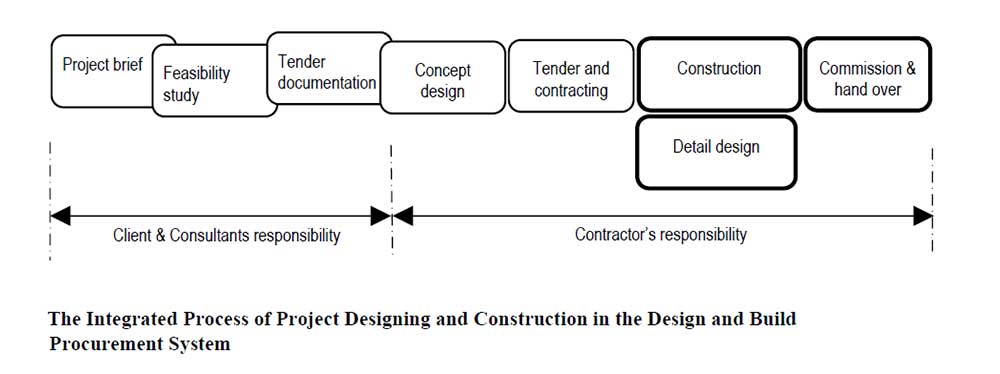
Additionally, with a single point of responsibility, there’s greater accountability throughout the entire process.
Design & build benefits: Streamlined communication and coordination between designers and builders.
Advantages of this procurement: Faster project completion due to overlapping design and construction phases.
Challenges in choosing a procurement method: Ensuring accountability throughout the entire process.
Case studies of successful procurement methods: Examples of projects where the Design & Build method has been successfully implemented.
Role of technology in procurement methods: How technology can enhance efficiency and effectiveness in the Design & Build procurement process.
With an understanding of the benefits and advantages offered by Design & Build as an alternative procurement method in construction, it’s important to explore other management-oriented methods that also contribute to successful project delivery without compromising on quality or timeliness.
2. Management-Oriented Methods
In this discussion, we’ll explore two key points in management-oriented methods of procurement in the construction industry.
Firstly, we’ll delve into Construction Management. This involves the client appointing a team of professionals to oversee and manage the entire construction process.
Secondly, we’ll explore Management Contracting. Here, the client contracts with a management contractor who’s responsible for coordinating and managing all aspects of the project.
By understanding these two methods, you can gain insight into different approaches to effectively manage construction projects.
2.1 Construction Management
Construction Management involves overseeing the planning, coordination, and execution of construction projects to ensure they’re completed efficiently and within budget.
This includes various tasks such as construction project planning. The management team develops a comprehensive plan for the project, considering factors such as timelines, resources, and stakeholders.
Risk management in construction is also crucial. It involves identifying potential risks that may arise during the construction process and implementing strategies to mitigate them.
Cost estimation in construction is another key aspect of Construction Management. Accurate cost projections are made to determine the financial feasibility of the project.
Quality control in construction ensures that all aspects of the project meet or exceed industry standards and client expectations.
Lastly, project scheduling in construction involves creating a detailed timeline for each phase of the project to ensure smooth progress and timely completion.
With all these elements in place, Construction Management sets the foundation for successful project execution.
Transitioning into management contracting allows for greater collaboration between the client, contractor, and subcontractors to achieve optimal results.
2.2 Management Contracting
Get ready to step into the world of Management Contracting, where you’ll be amazed by the collaborative power and efficient execution that comes with this innovative approach.
With management contracting, the main contractor is appointed early in the project, allowing for their input during design development and procurement of trade contractors. This fosters collaboration among all parties involved, leading to better coordination and faster decision-making.
The advantages of management contracting include greater flexibility in design changes, improved cost control through open-book accounting, and enhanced quality through direct trade contractor engagement. However, there are also disadvantages such as potential conflicts of interest between the main contractor and trade contractors, increased risk for the client due to not having a fixed price contract, and potential delays caused by coordinating multiple contracts.
Successful case studies of management contracting projects include the London 2012 Olympics Athletes’ Village and Terminal 5 at Heathrow Airport.
When implementing a management contracting approach, key considerations include selecting an experienced main contractor with strong project management capabilities, clearly defining roles and responsibilities among all parties involved, establishing effective communication channels, and ensuring proper risk allocation through appropriate insurance coverage.
In comparison to other procurement methods like traditional lump-sum contracting or design-build, management contracting offers greater flexibility but requires more active involvement from the client throughout the project duration.
Emerging trends in management contracting in the construction industry include increased adoption of digital technologies for collaboration and information sharing among project participants, greater emphasis on sustainability practices throughout the project lifecycle, and integration of lean construction principles to enhance efficiency and reduce waste.
As we transition into discussing joint venture/partnering approaches in construction procurement…
3. Joint Venture / Partnering
Let’s explore the collaborative approach of a joint venture or partnering in the construction industry. A joint venture or partnering is a procurement method that involves two or more companies coming together to work on a construction project. This approach offers several benefits, such as pooling resources and expertise, sharing risks and rewards, and promoting collaboration between different parties.
By forming a joint venture or partnership, companies can combine their strengths and capabilities to tackle large-scale projects that may be too challenging for a single entity. This approach also allows for better coordination and communication among project stakeholders, leading to improved project outcomes.
However, like any procurement method, joint venture or partnering also comes with its own set of risks and challenges. One of the main risks is the potential for conflicts and disagreements between the participating companies. Differences in management styles, decision-making processes, and priorities can lead to delays and disputes if not properly addressed. Additionally, there may be challenges in aligning objectives and ensuring effective communication among all parties involved.
Despite these challenges, joint ventures or partnering has become increasingly popular in the construction industry due to its ability to foster collaboration and shared responsibility. It aligns with current trends in project management strategies that emphasize cooperation and integration among various stakeholders. With proper planning and open communication channels, joint ventures or partnerships can successfully deliver complex construction projects.
Now let’s transition into discussing another procurement method called ‘design build finance and operate’ which focuses on integrating design, financing, construction, and operation under one contract structure.
4. Design-build Finance and Operate
In this discussion, we’ll explore the key points of Public Private Partnership (PPP), Private Finance Initiative (PFI), Design Build Operate (DBO), Build, own, operate and transfer (BOOT), and Build Operate Transfer (BOT) procurement methods in the construction industry.
You’ll learn about how these methods involve collaboration between public and private entities to finance, design, build, and operate infrastructure projects.
These methods offer unique benefits and considerations for both parties involved in the project.
4.1 Public-Private Partnership (PPP)
Public Private Partnership (PPP) is a procurement method in the construction industry that combines the resources and expertise of both the public and private sectors to deliver infrastructure projects. This method offers several advantages. For example, it allows for the sharing of risks between the public and private sectors, enables efficient use of resources, and leverages private sector innovation and efficiency. PPPs can also provide access to alternative financing options, such as project finance or long-term concessions.
However, there are also disadvantages to consider. These include potential conflicts of interest between public and private partners, higher costs due to profit margins for private companies, and limited control over project decisions for the public sector. When comparing PPPs with other procurement methods like design-build contracts, it’s important to note that cost reimbursement contracts offer more flexibility but may result in higher costs compared to lump sum contracts.
Risk management is another crucial aspect of construction procurement. Careful consideration should be given to risk allocation among parties involved in the project.
As for financing options for alternative procurement methods like PPPs or Private Finance Initiatives (PFI), different models can be utilized based on factors such as project complexity, revenue streams, and desired risk transfer levels.
With that said, let’s move on to discussing the next subtopic: ‘private finance initiative (PFI)’.
4.2 Private Finance Initiative (PFI)
Now let’s discuss the Private Finance Initiative (PFI) as another procurement method in construction.
In a PFI, the private sector is responsible for financing, designing, constructing, and operating a public infrastructure project. This approach allows the government to transfer some of the risks and responsibilities to the private sector.
The advantages of this method include access to private funding sources, efficient project delivery, and reduced upfront costs for the government. However, there are also risks involved in PFI projects, such as cost overruns and potential conflicts of interest between the public and private sectors.
On the other hand, lump sum contracts offer benefits like fixed pricing and clear deliverables but can pose challenges in terms of changes or unforeseen circumstances during construction. These factors need to be carefully considered when selecting a procurement method for a construction project.
Moving on to the next section about ‘design build operate (DBO)’…
4.3 Design Build Operate (DBO)
Explore the Design Build Operate (DBO) approach to better understand its benefits and considerations.
The DBO procurement method is a comprehensive approach that involves the design, construction, and operation of a facility all in one contract.
One of the main benefits of DBO is that it promotes collaboration and integration among different stakeholders throughout the entire project lifecycle. This can lead to improved communication, reduced conflicts, and increased efficiency.
Additionally, DBO can result in faster project delivery as there are fewer handovers between different phases of the project.
However, there are also challenges associated with DBO, such as the complexity of managing multiple aspects of a project under one contract and potential conflicts of interest between the design-build team and the operator.
When comparing DBO to traditional procurement methods, DBO offers more accountability as a single entity is responsible for both construction and operation.
Furthermore, case studies have shown successful implementation of DBO in various projects including infrastructure development and public-private partnerships.
Looking into the future, DBO is expected to continue gaining popularity due to its potential for cost savings, time efficiency, and integrated project management.
Now let’s move on to discussing another procurement method known as ‘build, own, operate and transfer (BOOT).’
‘Build, own, operate and transfer (BOOT)’ is a procurement method where a private entity is responsible for financing, constructing, owning, operating, and maintaining an infrastructure project for a specified period before transferring it back to the public sector.
4.4 Build, own, operate, and transfer (BOOT)
The Build, Own, Operate, and Transfer (BOOT) procurement method offers private entities the opportunity to finance, construct, own, operate, and maintain an infrastructure project before eventually transferring it back to the public sector. This method provides a unique approach to project development and management by combining various aspects such as ownership and operation.
Here are three key points about the BOOT method:
1) It allows private entities to take on the responsibility of financing and constructing the project while also maintaining ownership throughout its operational period.
2) The BOOT method is often used in public-private partnerships (PPP), where the government collaborates with private entities to carry out infrastructure projects that benefit both parties.
3) Unlike other procurement methods like re-measurable contracts or design-build methods, BOOT involves not only the construction phase but also the long-term operation and maintenance of the infrastructure. This comprehensive approach ensures that all aspects of the project are taken into account from start to finish.
Moving forward, let’s delve into another procurement method called ‘Build Operate Transfer (BOT).’
4.5 Build Operate Transfer (BOT)
Start by considering the Build Operate Transfer (BOT) procurement method, which allows you to have your cake and eat it too, as it allows private entities to finance, construct, operate, and eventually transfer infrastructure projects back to the public sector. The BOT procurement method offers several advantages, including transferring the risks and responsibilities of operation and maintenance to the private entity during the concession period. This allows for efficient project delivery and ensures that the infrastructure is well-maintained during its operational phase.
In comparison to traditional procurement methods in construction, BOT provides a more innovative approach by leveraging private sector expertise and resources while still benefiting the public sector in the long run. There are numerous case studies showcasing the successful implementation of BOT in various infrastructure projects such as toll roads, airports, power plants, and water treatment facilities. However, like any other procurement method, BOT also has its risks and challenges.
These include ensuring proper risk allocation between parties involved, addressing regulatory compliance issues, managing financial viability throughout the concession period, and securing appropriate transfer mechanisms at the end of the contract term. Overall, BOT presents an attractive option for governments seeking to develop critical infrastructure projects without burdening their budgets or compromising on quality.
Transitioning into the subsequent section about ‘renovate’, ‘operate’, and ‘transfer’ (ROT), we will explore another interesting procurement method with distinct advantages in construction projects.
Advantages of Build Operate Transfer (BOT)
- Efficient project delivery
- Private sector expertise
- Risk transfer
- Long-term infrastructure maintenance
4.6 Renovate, Operate, Transfer (ROT)
Renovate, Operate, Transfer (ROT) allows for the rejuvenation and revitalization of infrastructure projects, ensuring their long-term sustainability and efficiency. With this procurement method, you have the flexibility to renovate existing structures while also taking charge of their operations.
This approach is particularly beneficial when you’re faced with budget constraints as it allows for cost-effective renovations that can extend the lifespan of the infrastructure. Additionally, ROT provides a comprehensive solution for risk management by allowing you to oversee the operations and address any potential issues proactively.
Asset ownership considerations are also taken into account with ROT, providing a clear framework for transferring ownership once the project reaches its designated lifespan. When it comes to financing options, ROT offers opportunities for public-private partnerships or concessions where private entities can invest in the renovation and operation of infrastructure projects.
Transitioning into the subsequent section about the ‘engineering procurement and construction contract (EPC) / turnkey contract’, it’s important to explore another procurement method that offers an all-in-one solution for project delivery.
5. Engineering Procurement and Construction Contract (EPC) / Turnkey Contract
Engineering procurement and construction contracts, also known as EPC or turnkey contracts, are like a one-stop shop for clients in the construction industry, providing them with a seamless solution that takes care of the entire project from start to finish. These contracts offer numerous benefits to clients, including reduced risk and increased efficiency.
With an EPC contract, the responsibility for design, procurement of materials and equipment, construction, and commissioning all lies with a single contractor. This streamlines the process and allows for better coordination between different aspects of the project. Additionally, EPC contracts often come with performance guarantees, ensuring that the completed project meets the client’s expectations.
While there are many advantages to using an EPC contract, there are also some drawbacks to consider. One potential drawback is that these contracts can be more expensive upfront compared to traditional methods of procurement. This is because all aspects of the project are bundled together under one contract, which may result in higher costs. Additionally, since a single contractor is responsible for everything from design to construction, there may be less flexibility for clients to make changes or modifications during the course of the project.
EPC contracts are commonly used in infrastructure projects such as road construction or building power plants where a comprehensive approach is needed. They are also frequently utilized in renewable energy projects like solar or wind farms because they provide a streamlined process for designing and constructing complex systems.
Moving forward into the next section about ‘engineering procurement and construction management contract (EPCM)’, it’s important to understand how this type of contract differs from an EPC contract while still offering its own unique advantages and considerations.
6. Engineering Procurement and Construction Management Contract (EPCM)
Discover the advantages and considerations of an Engineering Procurement and Construction Management (EPCM) contract, a unique approach that allows you to maintain control over your construction project while leveraging the expertise of professionals.
One advantage of an EPCM contract is that it allows you to have greater control over the project. With this type of contract, you are responsible for procuring all materials and equipment, as well as overseeing the construction process. This gives you the flexibility to make adjustments and changes as needed throughout the project, ensuring that your vision is fully realized.
However, there are also some disadvantages to consider with an EPCM contract. One major challenge is that it requires significant coordination and collaboration between various parties involved in the project. This can lead to increased complexity and potential conflicts if not managed properly. Additionally, since you are responsible for procuring materials and equipment, there may be additional costs associated with sourcing these items.
When comparing EPCM to other procurement methods, one key difference is that in an EPCM contract, the contractor does not assume any construction risk. Instead, they provide management services and oversee the project on behalf of the client. This can be advantageous for clients who want more control over their projects but may require more resources and expertise.
In terms of contract administration, an EPCM contract typically involves a detailed scope of work document that outlines specific deliverables and timelines. It also includes provisions for change orders or variations to accommodate any modifications during construction.
Transition: Now that we’ve explored the advantages and considerations of an EPCM contract, let’s move on to discuss emerging cost contracts in construction projects.
7. Emerging Cost Contracts
Emerging cost contracts have become a popular choice in the construction industry due to their flexibility and ability to adapt to changing project requirements and budgets. These contracts provide a unique approach where the contractor is responsible for both the design and construction of the project.
This means that the client only has one point of contact throughout the entire process, streamlining communication and decision-making.
One of the advantages of design-build contracts is that they allow for the early involvement of contractors in the design phase. This can lead to improved constructability, cost savings, and reduced time delays. Additionally, these contracts often result in faster project delivery compared to traditional procurement methods, as there are fewer layers of approval required.
Factors affecting procurement decisions include speed or time constraints, budget considerations, expected quality requirements, specific project constraints, risk management strategies, asset ownership situations, and financing arrangements. It is important for clients to carefully evaluate these factors before selecting a procurement method for their construction project.
Risks associated with traditional procurement methods in construction include potential delays due to sequential decision-making processes and fragmentation between different parties involved in the project. On the other hand, emerging cost contracts offer benefits such as increased collaboration between stakeholders and shared risks among the parties involved.
Public private partnerships (PPPs) are another type of emerging cost contract that has gained popularity in recent years. These partnerships involve collaboration between public entities (such as government agencies) and private companies for infrastructure development projects. PPPs offer several benefits including access to private sector expertise and resources, risk sharing between public and private partners, and long-term maintenance provisions.
Conclusion
To conclude, when choosing a procurement method or contract type for a construction project, it’s crucial to consider factors such as speed, budget, expected quality, specific project constraints, risk, asset ownership, and financing. These factors play a significant role in ensuring the successful execution of the project and meeting the client’s expectations.
However, studies have shown that 70% of construction projects experience cost overruns due to improper selection of the procurement method.
Some procurement challenges that need to be addressed include managing risks effectively and navigating through project constraints. Alternative methods of procurement can provide solutions to these challenges by offering more flexibility and adaptability compared to traditional methods. These alternative methods allow for greater collaboration between stakeholders and enable innovative approaches to problem-solving. By embracing alternative methods, construction projects can benefit from reduced costs and improved efficiency.
Risk management is another critical aspect of procurement in construction. Different procurement methods in construction offer varying levels of risk allocation between the parties involved. It’s essential to carefully assess the risks associated with each method and choose one that aligns with the client’s risk appetite.
Moreover, project constraints can have a significant impact on the choice of procurement method. Government projects often come with specific requirements and regulations that necessitate transparent processes. On the other hand, private clients may prioritize factors like speed or quality when deciding on a procurement method.
Lastly, financing options should also be considered during the selection process. Projects funded by banks or financial institutions may require transparent procurement methods to ensure the proper utilization of funds. Understanding these financing options can help in making an informed decision about which procurement method will best suit the project’s financial needs.
Selecting an appropriate procurement method or contract type is crucial for successful construction projects. Considering factors such as speed, budget, expected quality, specific project constraints, risk management strategies, the impact of finance options, and asset ownership will help in making an informed decision that aligns with both client requirements and industry best practices.
Frequently Asked Questions
How do key factors such as speed, budget, and expected quality play a role in choosing a suitable procurement method?
When choosing a procurement method, key factors like speed, budget, and expected quality are crucial. You must balance speed vs quality and budget vs quality to find the right approach. Speed is important for timely completion, while budget ensures financial control.
What are the advantages and disadvantages of traditional procurement methods compared to alternative methods?
When comparing traditional procurement methods to alternative methods, there are advantages and disadvantages to consider. Traditional methods offer familiarity and established processes but can be time-consuming and inflexible. Alternative methods provide innovation and flexibility but may lack industry-wide acceptance and experience.
Are there any specific industry trends or emerging procurement methods that are gaining popularity in the construction sector?
Collaborative procurement, design and build, integrated project delivery, public-private partnerships, and sustainable procurement are emerging trends in the construction sector. Collaborative procurement, for example, has seen a 25% increase in adoption over the past year.
